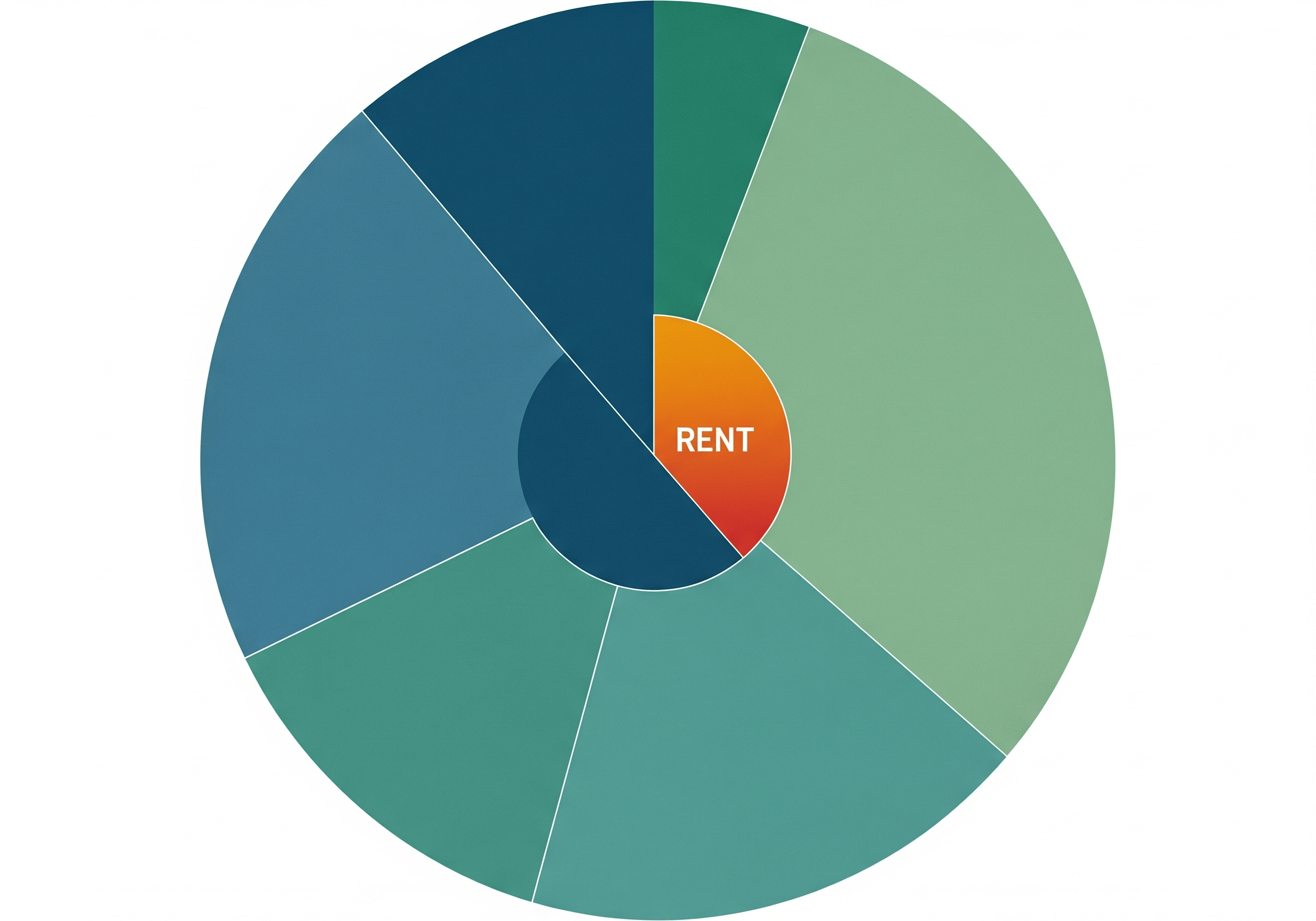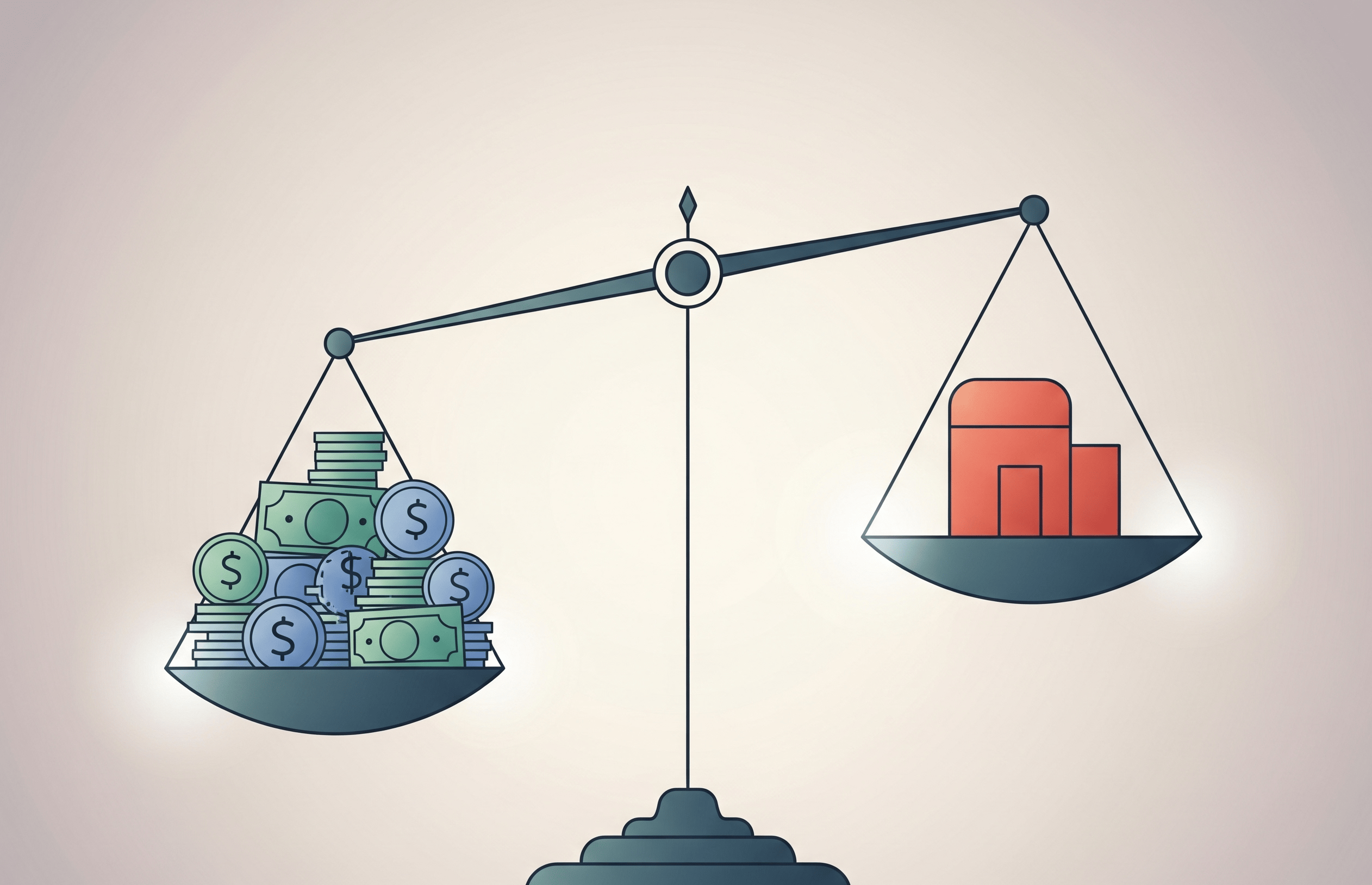Imagine finally getting that apartment you've been eyeing- close to work, within walking distance of everything. But after your first month, reality sets in: rent ate up your entire paycheck, and you're short on groceries, let alone savings. That's where the income-to-rent ratio comes in. It's not just a landlord's rule-it's your early warning system.
For anyone trying to build credit, protect savings, or escape the paycheck-to-paycheck cycle, understanding this ratio isn't optional- it's survival. Let's break down what it means, what's changing in 2025, and how to take control of your housing budget so you can start building credit and savings simultaneously.
What Is the Income to Rent Ratio?
The income-to-rent ratio measures how much your gross monthly income goes toward rent. It's a basic formula but says a lot about your financial stability.
Formula: Rent ÷ Gross Monthly Income × 100 = Your Ratio (%)
For example, if your rent is $1,200 and you make $3,600 a month before taxes, your income-to-rent ratio is 33%. Most landlords expect this number to be under 30%, meaning they want you to earn at least three times the rent.
But this isn't just about approval. When your ratio goes too high, everything else-food, gas, emergencies, savings-gets squeezed.

Why 30% Is the Magic Number
The 30% rule is more than just a rental guideline. It's a marker of affordability used by the U.S. Department of Housing and Urban Development (HUD) and financial experts. Renters who spend more than 30% of their income on housing are considered "cost-burdened." At 50% or more, you're considered "severely burdened."
Right now, that's the case for millions of Americans. As of 2024, the national income-to-rent ratio hovers around 30.1%, up from 27.5% in 2018. Cities like Miami, San Diego, and New York are pushing closer to 38%-well past the safe zone.
If your ratio is too high, it becomes more challenging to build savings, improve your credit, or qualify for credit-building products such as installment loans. It's also a red flag for landlords, lenders, and credit bureaus alike.
What's Behind the Rise?
Several things are pushing the average rent-to-income ratio higher:
- Wages haven't kept up. Between 2018 and 2023, average rents jumped 32.6%, while incomes only rose 20.8%.
- Housing shortages. In competitive rental markets, even modest apartments come with luxury price tags.
- Credit invisibility. Renters often settle for overpriced places without credit because they can't pass traditional screenings.
The bottom line? Rent is eating up more income, leaving less room for debt repayment, emergency funds, or credit-building moves.
How Landlords Use the Ratio
Landlords aren't just looking at your credit score-they're looking at whether you can afford the rent based on your income. Most require that you make three times the monthly rent. This isn't just a barrier- it's a filter. If you're rebuilding credit or don't have a credit history, income becomes the primary decision point- and this is one of the top ways landlords screen applicants without a credit report. That means improving your income-to-rent ratio can be the difference between getting approved or passed over.
When the Ratio Gets Too High, Everything Else Suffers
Rent that takes up too much of your income doesn't just affect your housing budget- it throws off everything else. Credit card balances often rise because renters lean on borrowed money to cover food, gas, and emergencies. Savings goals get sidelined, and unexpected expenses feel catastrophic. It also makes it harder to pay other bills on time, hurting your credit score. That missed payment history sticks, dragging down your financial profile. At a time when building credit is one of the best ways to unlock better financial tools, a high income-to-rent ratio becomes more than uncomfortable- it's a roadblock.
How to Improve Your Income-to-Rent Ratio
If rent is already eating up too much of your paycheck, there are still ways to course-correct. The obvious route is increasing your income through side gigs, part-time work, or a higher-paying role. But rent is often the bigger lever. Finding a roommate, relocating to a more affordable neighborhood, or negotiating your lease could make a faster impact. Tracking your full budget can also reveal hidden costs or spending patterns that are making rent feel more unsustainable than it is. Once your ratio improves, it gets easier to stay ahead of bills, build credit history, and start, especially when paired with tools like Cheers Credit Builder.
How Cheers Credit Builder Can Help
When your housing costs feel overwhelming, it's easy to put credit building on the back burner. But that's when a tool like Cheers Credit Builder can help you progress without overstretching your budget. Cheers lets you build credit while saving at the same time. You choose a loan amount and repayment term that fits your situation- no hard credit check is required. Then, each payment you make is reported to all three major credit bureaus, helping to build a positive payment history. Your money is held in an FDIC-insured account and returned to you at the end of your term (minus interest). The only cost is a low 1% monthly APR, with no admin or membership fees. For renters whose income-to-rent ratio already feels tight, Cheers gives you a way to build predictable, flexible credit for real life.
Final Thought
The income to rent ratio isn't just a number-it's a signal. When rent consumes more than 30% of your income, it becomes harder to progress anywhere else. But with the right budgeting moves and innovative tools like Cheers, you don't have to stay stuck in survival mode. Understanding and improving this ratio puts you in control-and gets you one step closer to financial momentum.
Cheers is not a bank—deposit account held by Sunrise Bank, Member FDIC.















